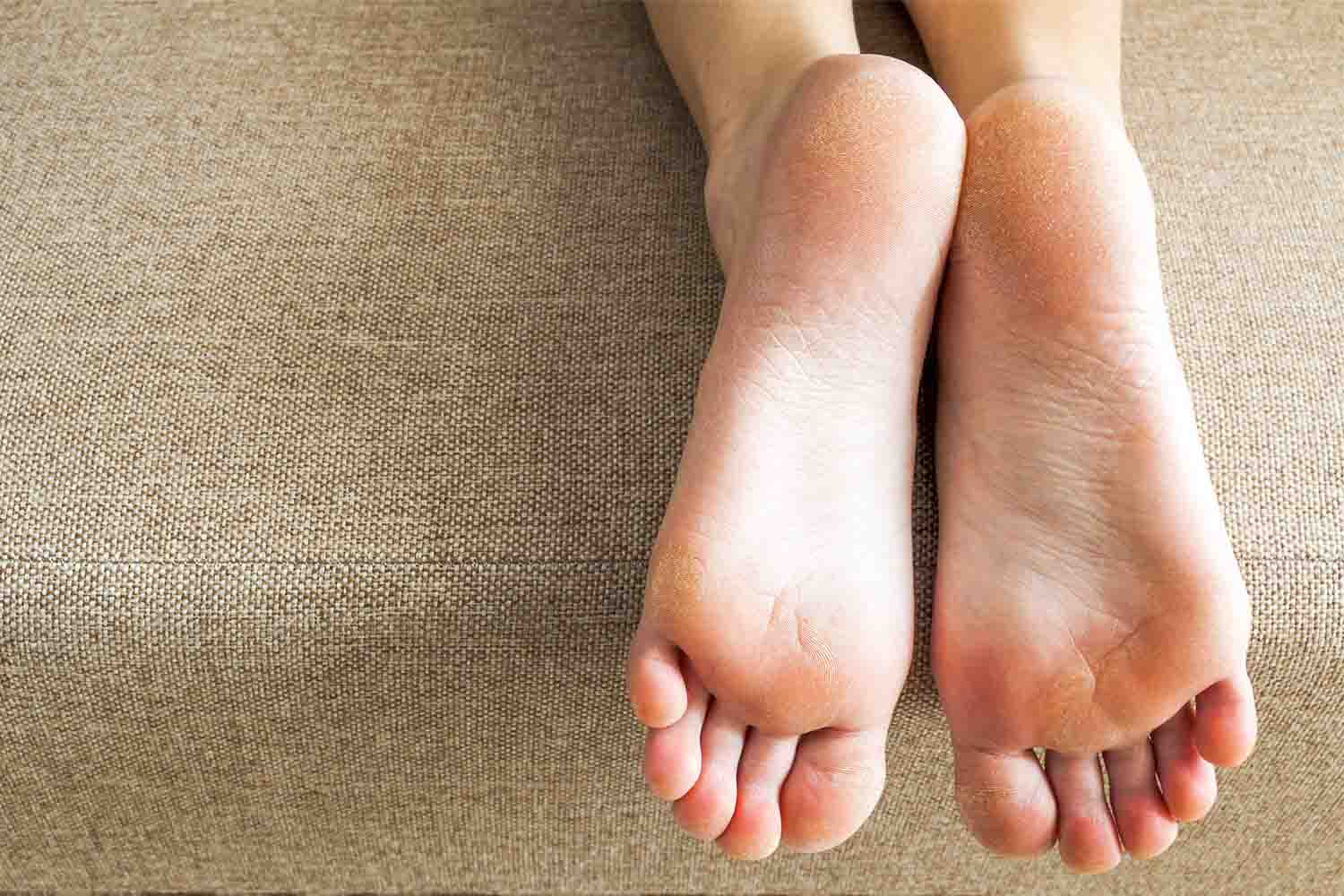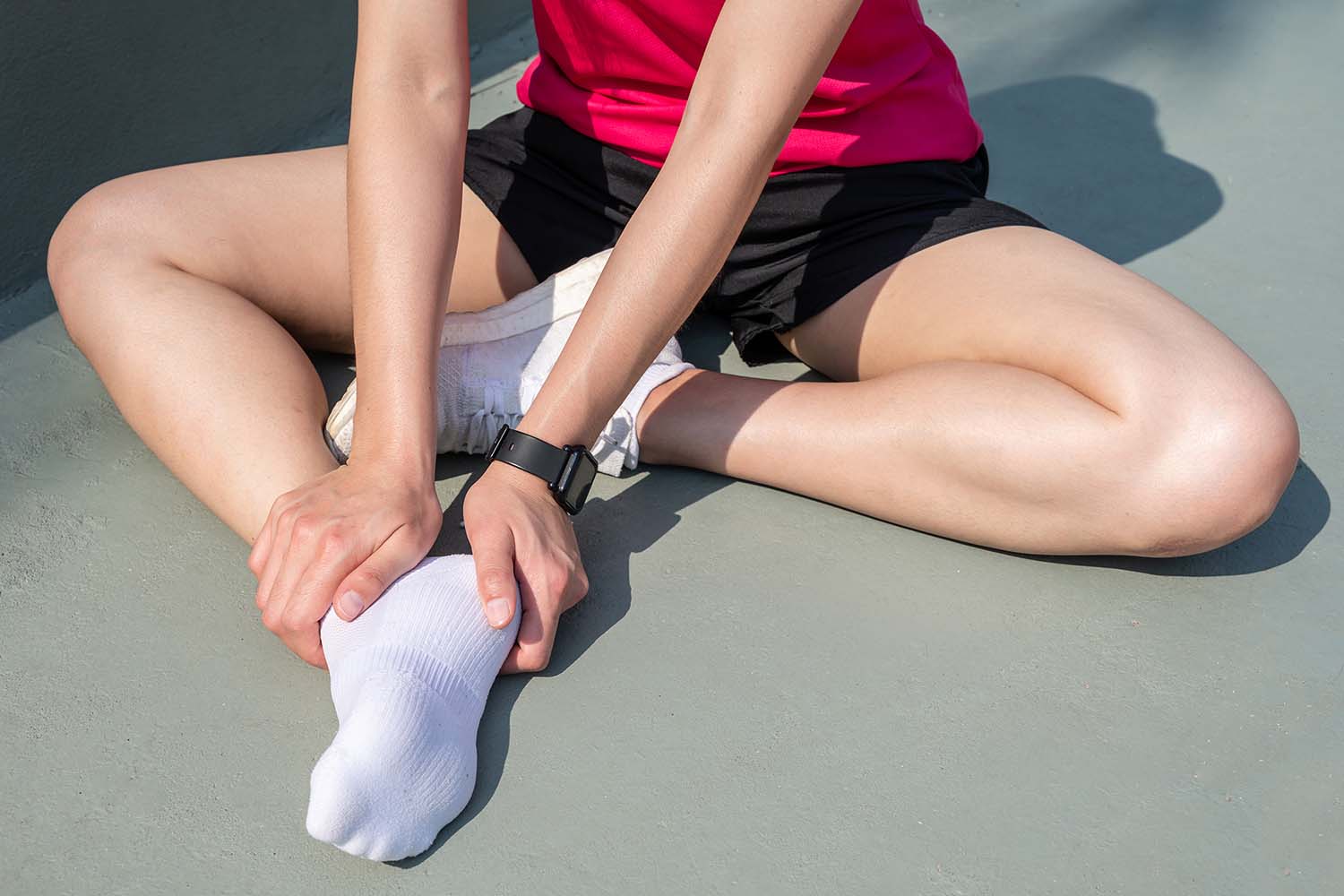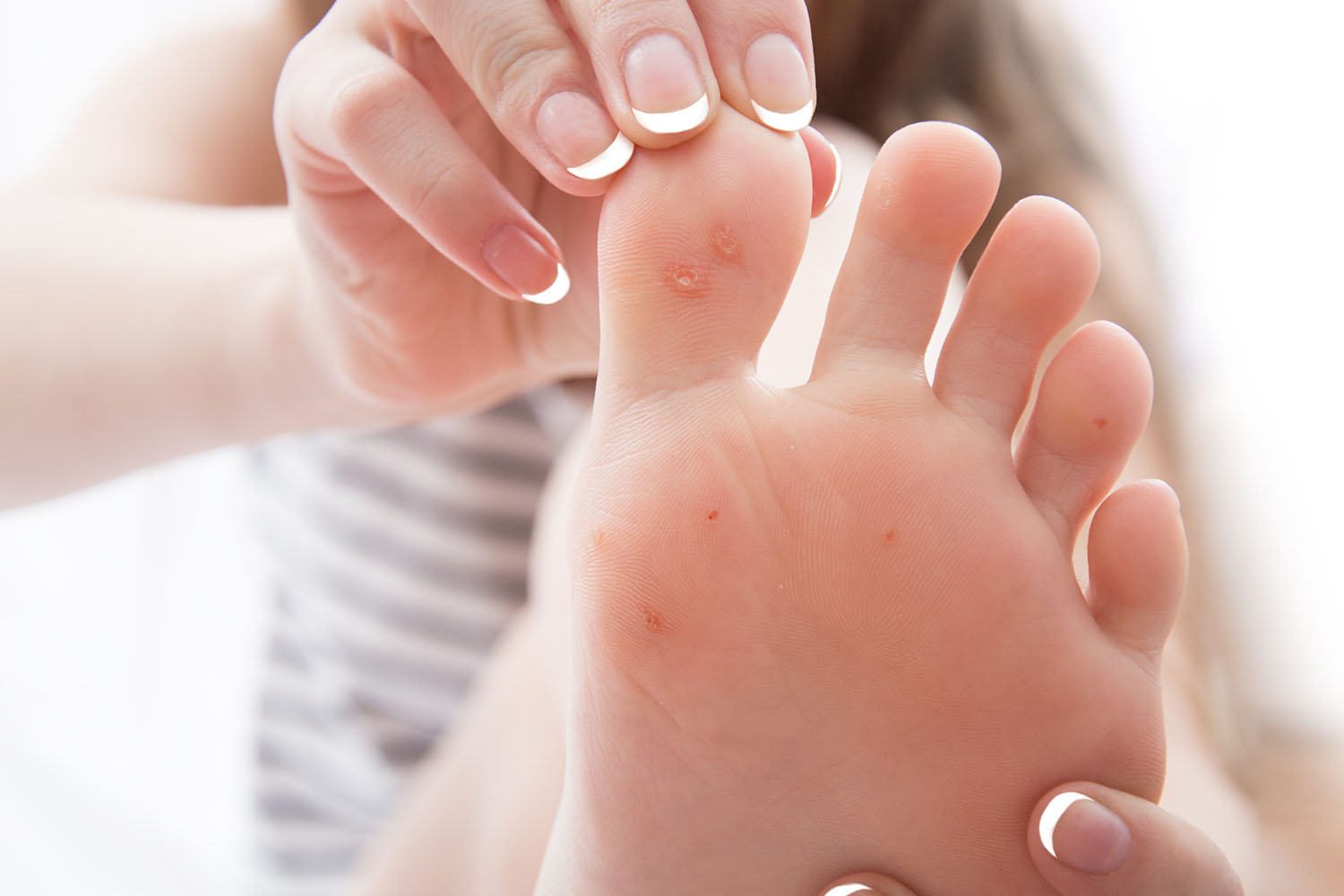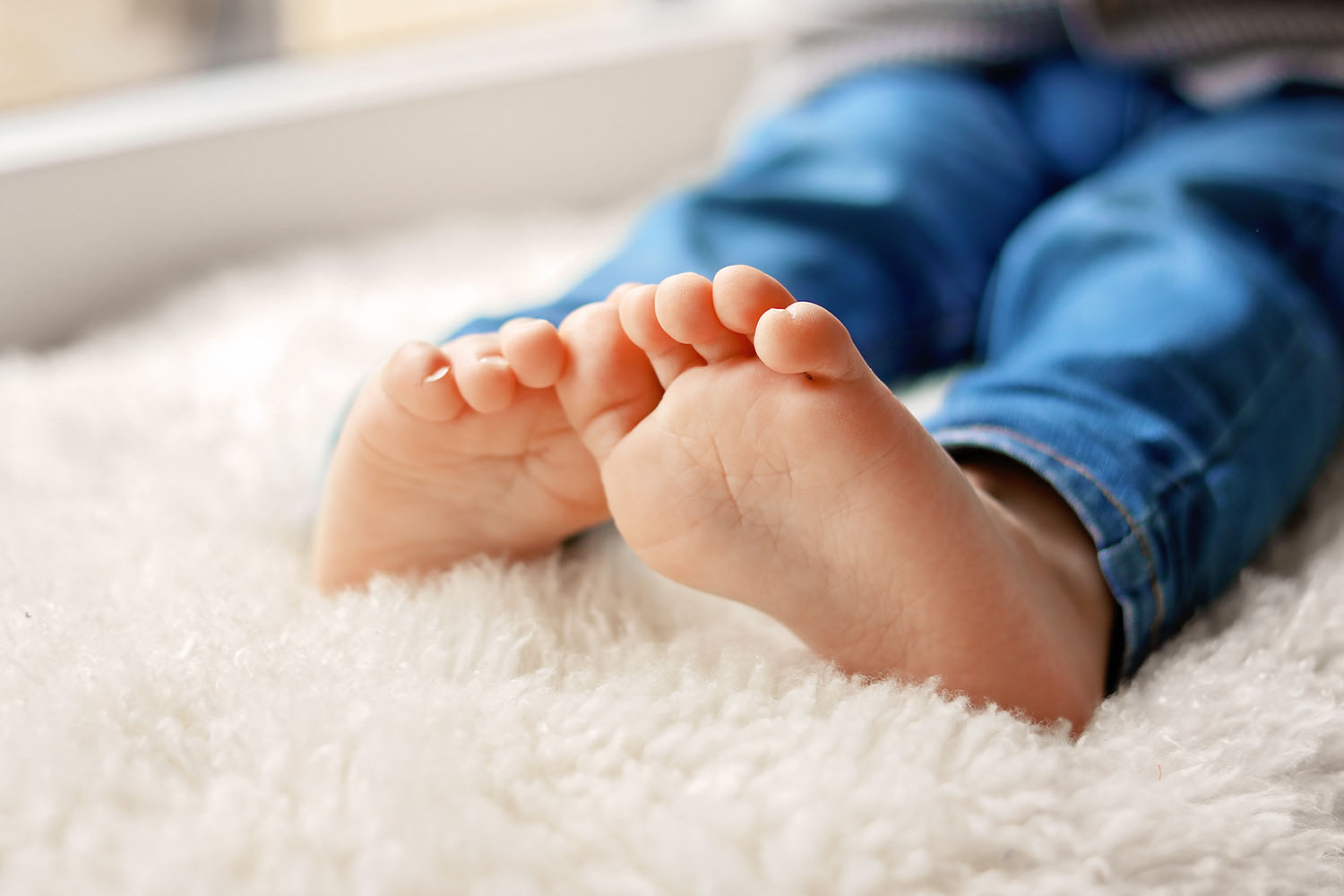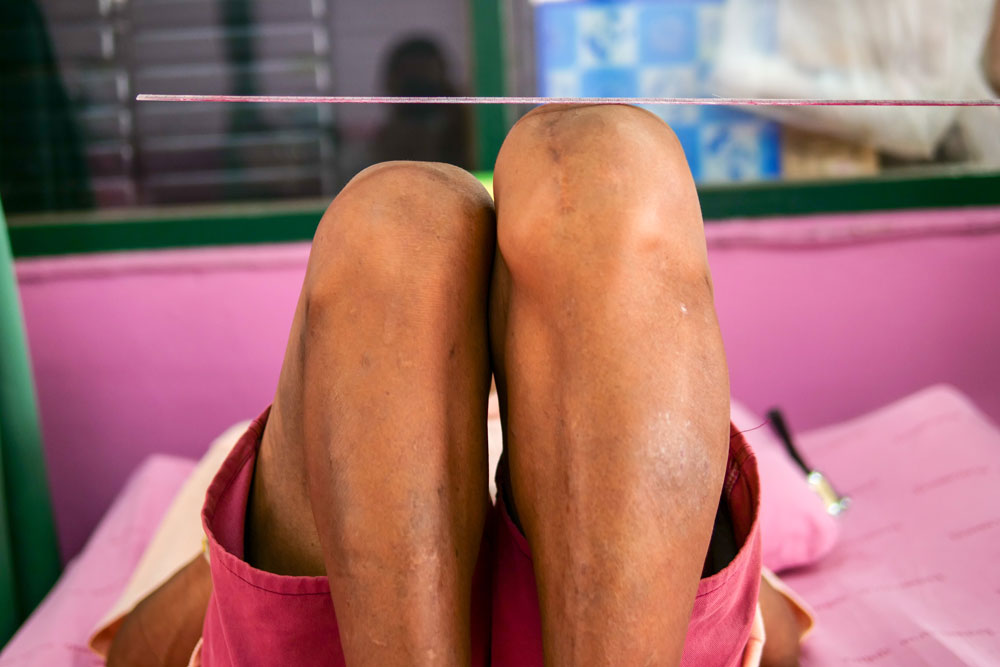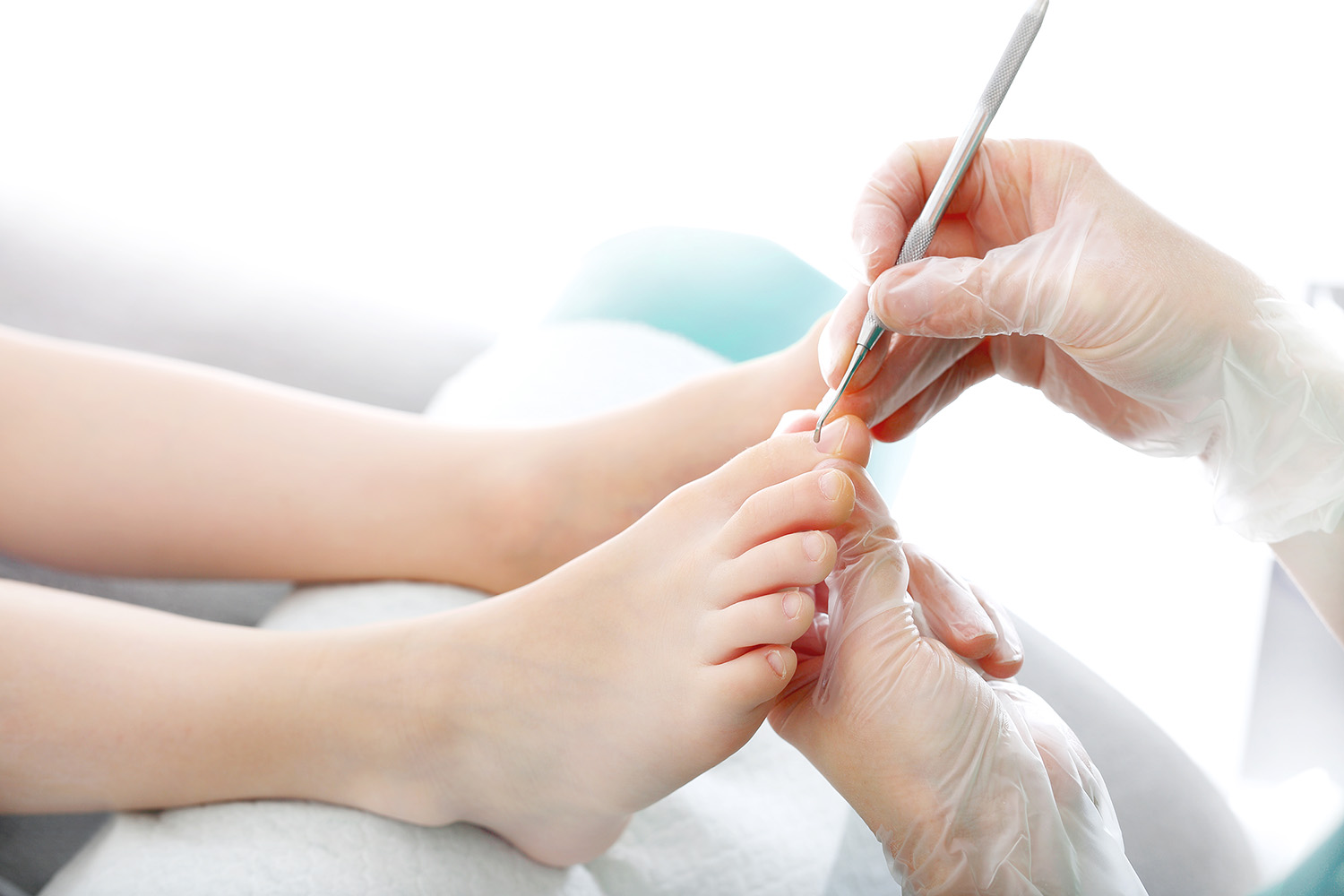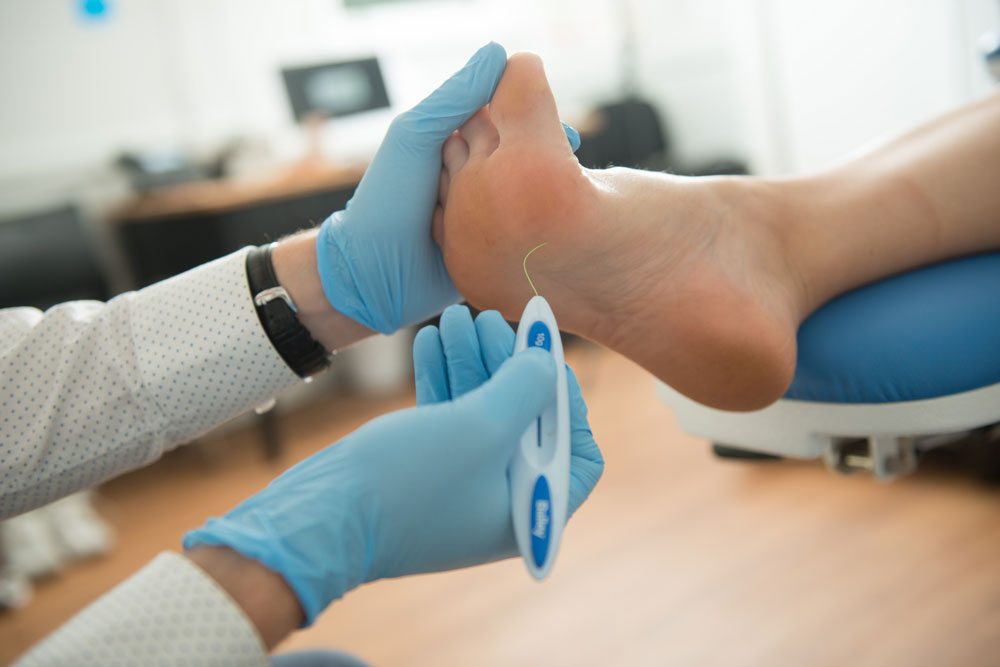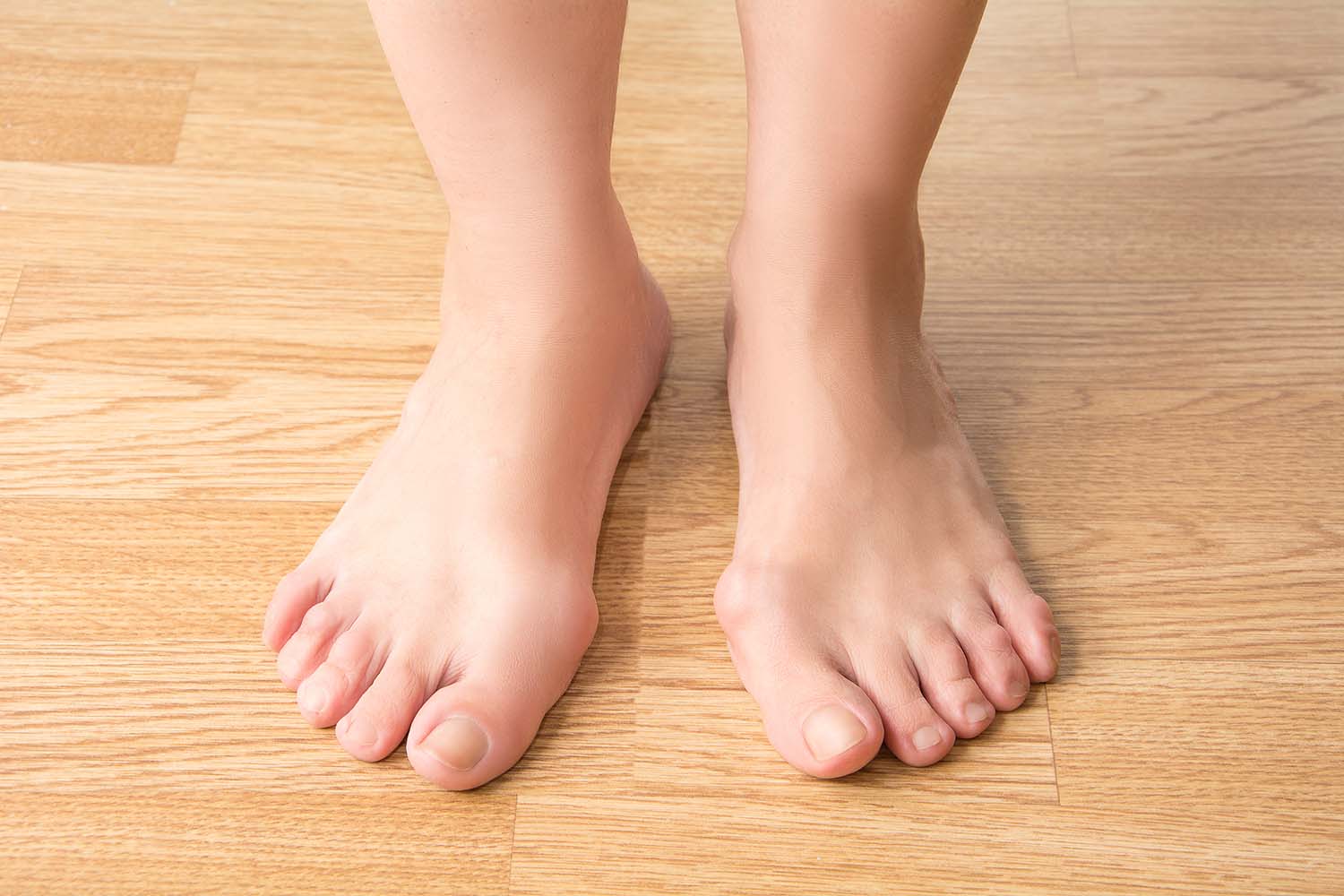Paediatric Flat Foot
There are a range of complex factors which can result in an infant, child or adolescent displaying paediatric flatfoot. To ensure we have the full picture, our Byron Bay podiatrist will conduct an in-depth assessment relative to the patient’s age.
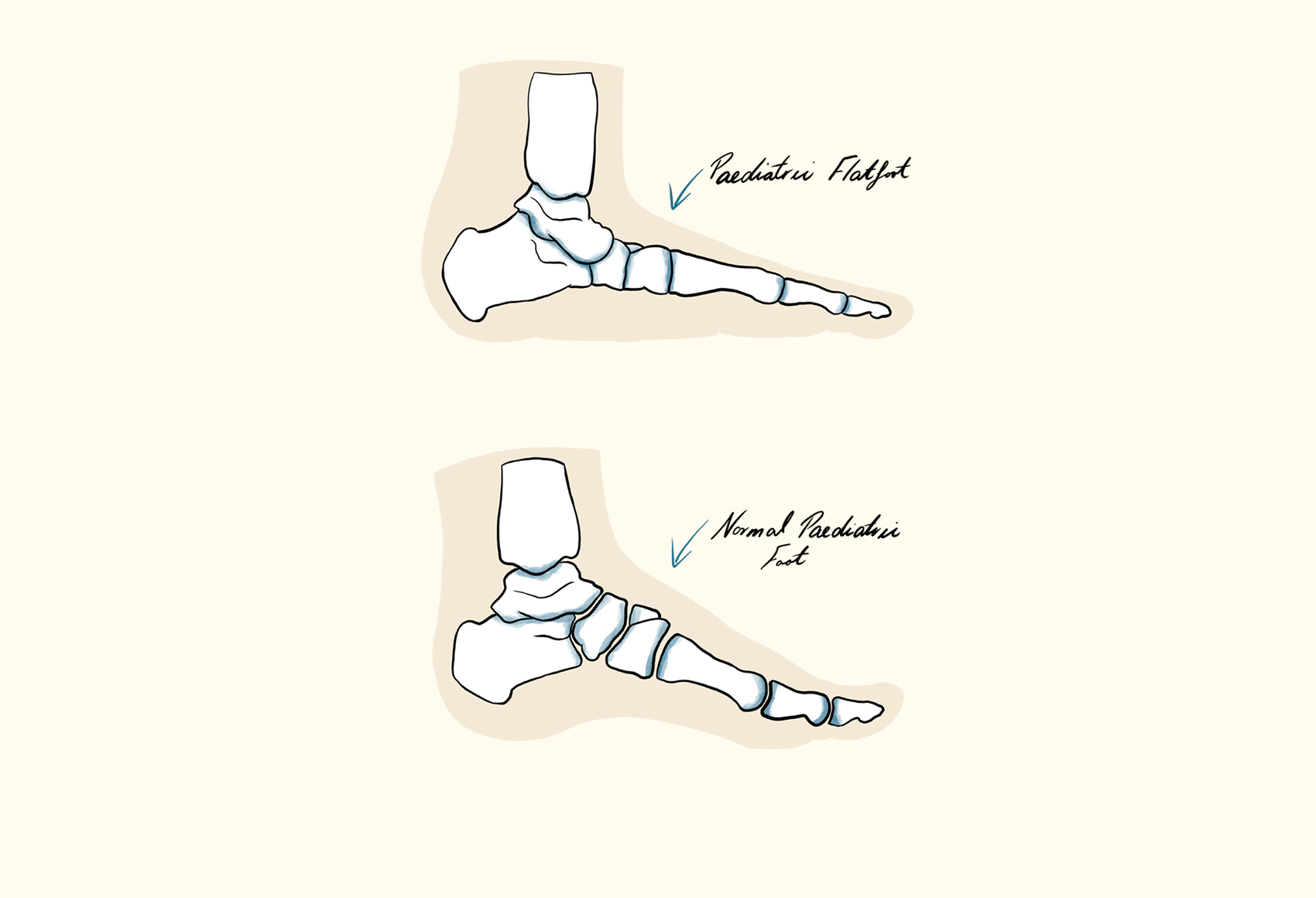
What is Paediatric Flatfoot?
Paediatric flatfoot is a very common condition. Young children’s bones and joints are extremely flexible which can result in the entire sole of a child’s foot making contact with the ground while standing and walking. It will often look as if the arches are collapsed or caved in. Although there are different levels of severity, it can appear as if the arches are bulging unnaturally out of the inner mid-section of the foot.
In light of this, it is important to understand that flatfoot in children and flatfoot in adults are two very different conditions and need to be treated as such.
Mostly, children tend to outgrow paediatric flatfoot (also referred to as pes planus and fallen arches), however, it’s not uncommon to see this condition in later years. Growth related changes in the feet’s alignment and mobility means that a child’s feet continue to change drastically until approximately their teenage years once skeletal maturity in the feet is reached. For this reason, it is wise to seek the expert opinion of a podiatrist.
Rigid and Flexible Paediatric Flatfoot
Paediatric flatfoot is separated into two categories:
Rigid Paediatric Flatfoot
Rigid flatfoot is a term to define arches that appear flat and stiff, in both weight bearing and non-weight bearing situations. It is usually related to complications with bony deformities and requires further investigation. Although it’s vital not to generalise, it is more common for rigid flatfeet to be associated with an underlying pathology which requires special attention.
Flexible Paediatric Flatfoot
Flexible flatfoot is a term to define arches that appear normal during non-weight bearing and become flattened once the arches are standing and distributing body weight. As a broad generalisation, flexible flatfoot is less of a concern. In many instances, children will not complain of any pain and be completely asymptomatic, running and playing normally. It may require ongoing monitoring to ensure this does not change as the child grows.
What Causes Paediatric Flatfoot?
Tight calf muscles, joint hypermobility and hypotonia are potential causes of paediatric flatfoot. It’s important to understand that paediatric flatfoot may be an isolated condition or a secondary symptom to another issue. Children with generalised ligamentous laxity, neurologic and muscular abnormalities as well as genetic and collagen disorders have an increased likelihood of also presenting with paediatric flatfoot.
Although a lot less likely, more serious causes can include Tarsal Coalition, Congenital Vertical Talus, Down Syndrome, Cerebal Palsy, connective tissue disorders such as Marfan’s Syndrome and even Ehlers Danlos Syndrome.
Paediatric Flatfoot Symptoms
While many children with flat feet do not experience adverse symptoms, it is always wise to have paediatric flatfoot assessed by a podiatrist. This is to help safeguard against possible future symptoms and support proper growth. Any of the following symptoms may be an indication of paediatric flatfoot:
- The physical appearance of flat, caved in arches when standing and walking.
- The physical appearance of flat, caved in arches when engaging in non-weight bearing activities.
- Fatiguing quickly when engaged in physical exercise and activities and voluntarily withdrawing from these situations.
- Difficulty finding shoes where the arches do not spill over the side of the shoe’s sole, leading to the upper inner side material being pressed towards the ground.
- A lack of ability to change walking styles with ease, such as walking, skipping and running.
- Pain, cramping, discomfort or tenderness in the feet, legs and/or knees.
- Outward tilting of the heels.
- Difficulty moving the foot up and down or side to side.
- Intermittent back pain.
- Ankle swelling.
- Complaints of growing pains in the evening that may disturb sleep.
- Awkward walking style (gait), poor coordination and clumsiness.
Paediatric Flatfoot Podiatrist Assessment
There is a range of complex factors which can result in an infant, child or adolescent displaying paediatric flatfoot. To ensure we have the full picture, our Byron Bay podiatrists will conduct an in-depth assessment relative to the patient’s age. Collecting a general history includes:
- Ascertaining if there is any family history of flatfeet, this is particularly relevant to children with hypermobility (commonly referred to as being ‘double jointed’).
- Tracking major motor milestones, including the age of first standing and walking.
- Comparing the child’s tendency to fall and trip in relation to age-matched peers or siblings.
- Previous use of orthotics and reviewing their wear patterns and effectiveness.
- Tracking pain in the feet, knees and legs and when it is more noticeable or hinders movement.
- The presence of significant comorbidities, syndromes or excessive weight bearing.
- Current shoes and how their soles have worn down over time.
- The stance and gait pattern barefoot and with the child’s current footwear. It’s beneficial to bring the shoes they wear most often, namely their school shoes or runners.
- Conducting an in-depth visual assessment of the gait, ankle range of motion as well as curvature and alignment of the feet.
- Referral for imaging when further information is required. This can include radiographs when weight bearing, computer tomography (CT) and magnetic resonance imaging (MRI).
- Using our state-of-the-art biomechanical assessment with video gait analysis and 3-D scanning of both feet.
Tips for Supportive Footwear for Children with Flat Feet
Although it is highly recommended not to purchase any orthotics or corrective measures without first consulting a specialist, good quality footwear is always recommended and can be actioned immediately. When shopping for new shoes for your child with flatfeet, look out for the following:
A straight sole
This means the base of the shoe does not taper in or become narrower at the arch section. Having a wide sole provides a solid base to support the feet.
Lace, buckle or Velcro fastening system
Try to avoid slip on shoes as they loosen with wear. This means the child will often compensate their natural gait to grip onto the shoe with their toes if it feels too loose.
Adequate support system
Many shoes come with a denser section of plastic or foam which makes the centre of the shoe firm and strong. Flex the shoe in your hands. It should feel quite stiff initially and only bend at the front section of the shoe close to where the toes bend to propel the body forward. It’s best not to purchase shoes which bend in the middle and have little structural integrity.
A good strong heel counter
A heel counter is often a reinforced plastic mould around the heel. Hold the shoes in your hand and use your thumbs to press against the heel section. It’s best not to purchase any shoes where the heel easily falls to the inside sole of the shoe. Good quality active footwear should provide support for the heels. As an aside, it’s important to support children to untie and tie their shoes properly when taking them on and off. Pushing the feet into fastened shoes often places excessive pressure on the heel counter and can alter their shape over time. This can lead to plastic sticking out, causing general discomfort and even blisters.
The correct width
Some stores will only measure the length of a child’s foot, if that. This can be problematic as the width can vary greatly. Place the sole of the shoe against the child’s foot to see how the width looks, then put the shoe on. It’s most ideal to have the foot sitting comfortably on the sole. Watch out for the side of the foot pressing over the edge of the sole and making the upper lining tight. This is an indication that the shoe is too narrow. Alternatively, it is an indication the shoe is too wide if the lining is quite loose and gathers unnaturally when the laces or Velcro are secured.
Removeable insert
Avoid footwear, especially runners, if the insert has been glued in. Shoes with a removable insert usually indicate a better-quality product and also ensure an orthotic can easily be inserted should it be needed.
It’s imperative to intermittently check that your child has not outgrown their shoes. Often parents only look at the physical condition of the shoe to gauge if it’s time for a new pair. It’s a good habit to check your child’s footwear sizing every couple of months or when you notice they’ve had a big growth spurt.
Ask your child to put on their shoes and make sure they stand. The foot will flatten slightly and become bigger once it’s weight bearing. Push their heel to the back of the shoe by getting them to tap their heel against the floor. Ensure the laces or Velcro are properly tied and then gently press down on the toe area to feel how much space there is. A thumb’s width is ideal; however, it can be slightly less. Mainly, you want to ensure that the toes are not touching or curled against the edge of the shoe. Bear in mind that the toes naturally move slightly forward in the shoe as the forefeet flex while walking.
Specialised Paediatric Flatfoot Treatment from Your Local Northern Rivers Podiatrist
Parents can become quite concerned and seek corrective treatment when a child’s arches do not develop or appear collapsed. It’s best not to attempt to treat the condition at home or with store bought orthotics / shoe inserts. A child’s feet undergo constant growth and change. Therefore, it’s best to gain the advice of a paediatric podiatrist to ensure the treatment is supportive and keeping up with the ongoing development of your child’s feet.
There are surgical options for paediatric flatfoot in the most extreme cases, which our Podiatrists can provide guidance on. With the vast majority of patients, however, we follow the growing evidence that shows non-surgical interventions such as those listed below can offer substantial benefits:
- Excellent footwear advice
- Orthotic therapy
- Physical therapy and stretching exercises advice
- Referral to other allied health professionals or specialists
- Activity modification and recommendations for rest and recuperation in cases of severe discomfort
- Weight management to alleviate excessive weight bearing in some cases
- Medication such as over the counter pain killers to reduce discomfort
- Imaging for further evaluation if necessary
At Northern Rivers Podiatry we fully understand the delicate nature of a child’s growing feet. If your little one has rolled in feet, then we will use all of our professional knowledge and equipment to medically assess their unique situation and provide the best course of action. We pride ourselves in offering a child friendly environment that is dependable, consistent and offers comprehensive support as your child grows and changes so they bound into adulthood ready to take on the world.
Contact Us
"*" indicates required fields
